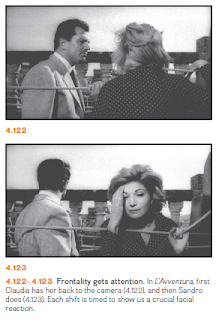"Film Art: An Introduction", David Bordwell and Kristin Thompson
David Bordwell and Kristin Thompson are a couple of film historians and film theorists who have written two widely used film textbooks, Film Art: An Introduction and Film History. They keep updating their blog Observations on Film Art with outstanding analysis that discuss “film techniques, formal strategies, stylistic choices, norms and transformations of them, and genre conventions” that serve as a complement to their book Film Art.
This book, originally published in 1979, is already in the 11th edition and has become, possibly, the best starting point if you want to engage in film criticism or even filmmaking activity. It contains the correct terms to make a film analysis of mise en scène, cinematography, editing and sound. With them, Bordwell and Thompson construct a series of analyzes of some classics as well as recent films, using stills of diverse scenes and discussing the effects that film directors achieve through filmic elements and how they help the viewer sharing the point-of-view of one character. Also, they discuss production methods, distribution and exhibition systems, film genres and present a resume of the history of cinema since its first years with Edison and Lumière until the Hong Kong stylization in the 1990s. We present here the 10th edition.
Excerpts:
“(…) we might hear sounds as the character would hear them, what sound recordists call sound perspective. In short, through either sight or sound, the filmmaker gives us what we might call perceptual subjectivity.
The filmmaker can go deeper, beyond the character’s senses and into her or his mind. We can call this mental subjectivity. We might hear an internal voice reporting the character’s thoughts, or we might see the character’s inner images, representing memory, fantasy, dreams, or hallucinations.”
“We know that faces give us access to characters’ thoughts and emotions. Another filmmaker might
have had Claudia already facing us when Sandro asked, so we’d see her response immediately. Antonioni instead makes things uncertain for a moment. He conceals Claudia’s reaction and then lets her turn toward us. To make sure that we watch her and not Sandro at this moment, Antonioni has him turn away when she gestures and speaks (“I’d like to see things clearly”). Our attention is riveted on Claudia.
Soon enough, Sandro turns back toward the camera, so we can see his reaction, but already Claudia’s anxiety has flashed out at us. Her complex relation to Sandro—attraction (sliding under the bell rope) and uncertainty (turning away tensely)—has been presented to us concretely.”
Link to the complete book in PDF:
 |
| Kristin Thompson and David Bordwell |






Comments
Post a Comment